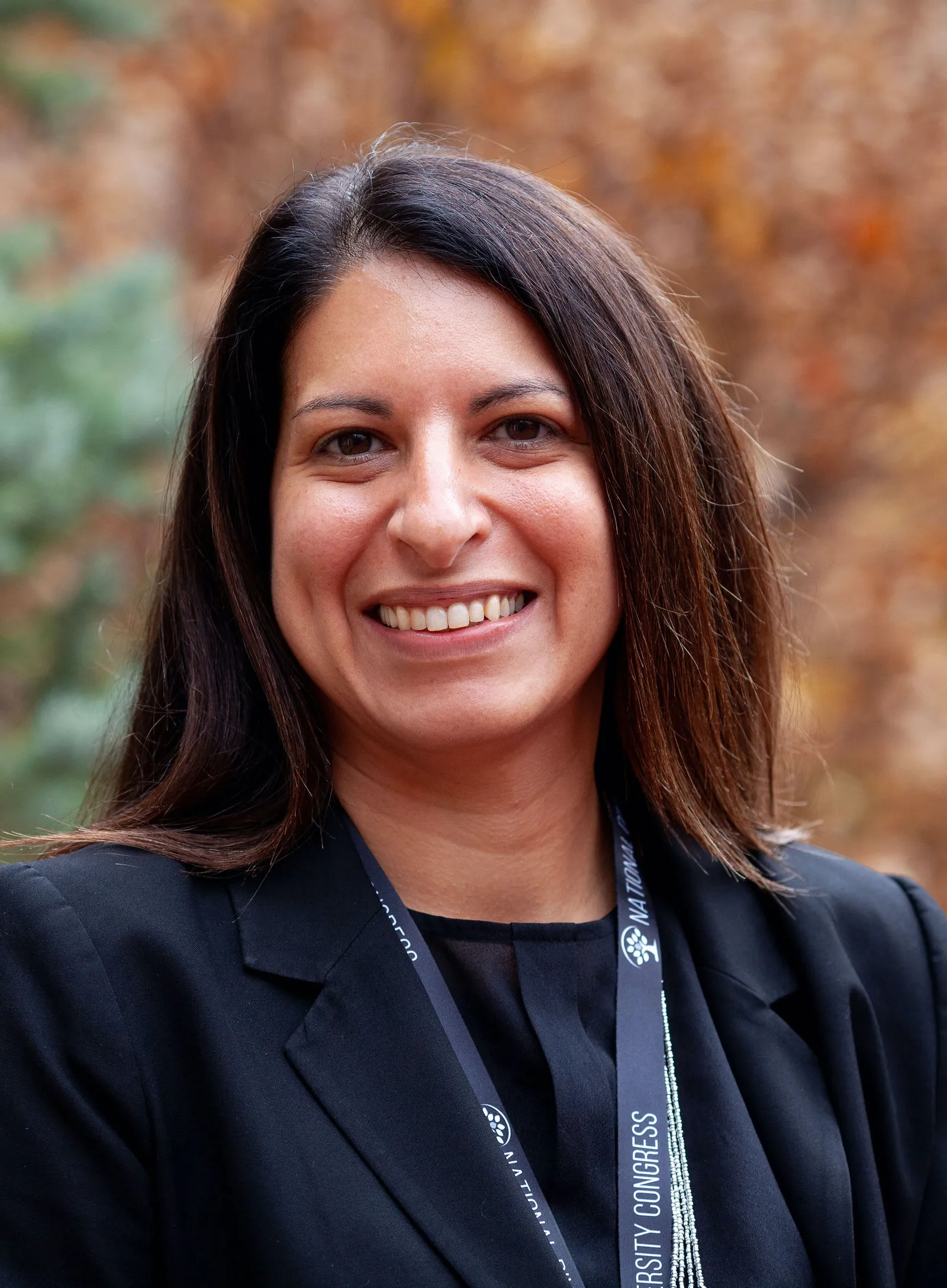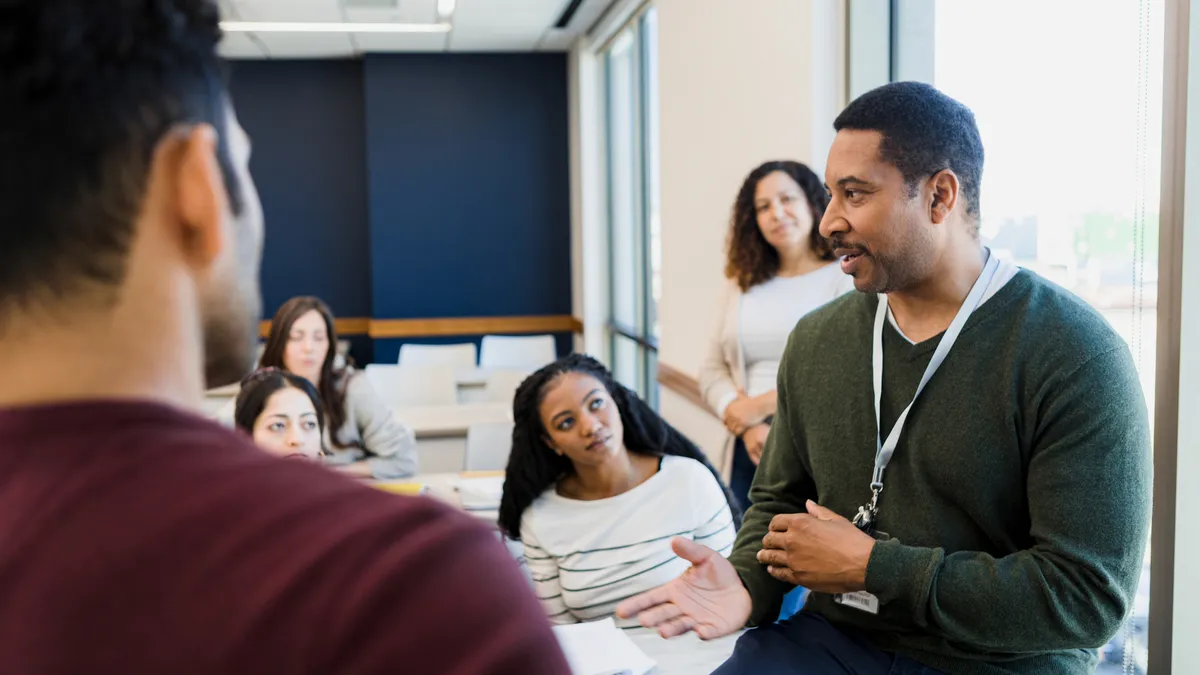College campuses have worked to address students’ mental health challenges for years, especially during the pandemic, and significant efforts are underway to get them the help they need.
But faculty and staff have also struggled with mental health, and a recent survey found the problem is worsening.
Two top officials at DeVry University — Elise Awwad, chief operating officer, and Dave Barnett, chief human resources and university relations officer — talked to Higher Ed Dive about offering faculty a variety of resources, the misconception that mental health exists in a vacuum, and getting rid of the phrase work-life balance.
DeVry — a primarily online, for-profit institution based in Illinois — enrolls just over 28,000 active students and employs over 1,100 full-time and visiting faculty, according to a university spokesperson.
This interview has been edited for clarity and length.
HIGHER ED DIVE: Where does a faculty member go to access mental health resources, and how do they know to get there?

DAVE BARNETT: We have a dedicated mental health team that can help somebody who's looking for mental health resources and to build a mental health plan. They can also proactively identify people that might be in need by looking at medical claims data from inside a bubble that is compliant with health privacy law. They can put resources in front of someone who might need mental health outreach but hasn't raised their hand yet.
The other way we keep mental health front and center is through a comprehensive colleague orientation. When employees join the institution, we do a detailed walk-through of all of the available benefits.
What are some of those benefits? What kind of support resources do you offer to faculty that you're especially proud of?
BARNETT: There's a few things we do to be out ahead in the mental health space. All of our colleagues have access to the Ginger app that offers on-demand 24/7 mental health coaching. It can also bridge them into video mental health services and can help them find resources in their community.
In our ecosystem of apps, we also have one called Vitality, which serves as our overall well-being platform. We really push everybody to get the app because we serve up resources and challenges there. You spin a digital wheel for doing wellness activities, anything from diet-based prompts to mental health ones. We're very open about the linkage between physical and mental health — those things don't happen in isolation, they are linked very closely together.
So if you engage in these activities, you're provided real incentives, like gift cards, for doing things that are known to have a positive impact on your physical and mental well-being.
We also have a great relationship with Care.com [an online homecare marketplace], which lets us help people manage day-to-day responsibilities and limit that kind of stress. Beyond website access, we give our folks an 800 number where someone will go do a search for the type of help that is needed — child care, elder care, a dry cleaner, a house cleaner — and they'll provide the names of people they can interview and even give tips on how to choose the right person.
That last option seems designed to directly address faculty concerns about finding a work-life balance.
BARNETT: Yes, but we've actually struck the term work-life balance. We talk about work life-integration. We're intentional in our language there because the notion that there's this artificial barrier between home life and work life anymore is just not tenable. And this notion can even create more stress.
Instead, we try to talk to our colleagues about how we effectively can integrate work and life in a way that's manageable. So that's where our flexible schedule comes in. That's where you get our volunteer time-off program, so folks can go give back to their community and organizations that they care about.
Why did you prioritize offering a wide array of support structures for faculty?

ELISE AWWAD: Providing a range of resources is important because people may want to experience support in different ways. They could look for live one-to-one interaction, text therapy, or just say, give me an assessment and a guide to tell me how to improve my well-being and my emotional fitness. The stigma around mental health is gradually diminishing, which is good because this is starting to result in an increase in the number of students, faculty and staff disclosing their concerns and their need for support in this area.
What do you look for in potential partner organizations?
AWWAD: Ease of access. Dealing with these challenges is hard enough, so it's important to be able to create an integrated system of entry points,to power that by user preference and to provide the support necessary using evidence-based treatment through those multiple modalities.
BARNETT: I totally agree, ease of access is huge. We're also looking for partners that have a proven track record of success.
One of the biggest downfalls in our healthcare system, especially our mental health system, is it's really hard to navigate. The more we can do to simplify the navigation of those resources and help people get the right solution at the right time, through expert individuals, the more I think we can move the needle.
Past research has found that many faculty feel responsible for their students, especially those who talk to them about personal matters and outside stressors. How do you train them to handle these kinds of situations?
AWWAD: As we roll out programs and support tools for students, we train our entire student-facing team on them. That includes student support advisors, admissions advisors and our faculty. A lot of the outside-of-the-classroom challenges tend to bleed into the classroom from time to time. So it's important they are trained and well versed in these resources.
BARNETT: We've also trained our faculty on how to navigate some of those difficult conversations. That's one of the points of stress for faculty. They see getting into a difficult and sensitive conversation one-on-one or in class and worry about their responsibility and shepherding it along. So we went out of our way to train our faculty and offered tips and tools for how they can navigate those classroom conversations.
We've also created an outlet for our colleagues. When sensitive social issues come up, we don't shy from those and say they shouldn't be in the workplace or be in the university setting. We have a series we call Courageous Conversations, offered through our diversity, equity and inclusion office. It's a way for folks to come together voluntarily to discuss those topics, share their perspectives, hear other's perspectives and talk through those things with their peers.
What recommendations do you have for college leaders who want to improve the culture around mental health on their campuses?
AWWAD: View mental health support through a more human-centric lens, and empower your leaders, your faculty and your staff to engage in these conversations more proactively.
BARNETT: Don't treat mental health as a fad, and don't treat mental health like it happens in a vacuum. It's easy to do in the HR [human resources] community, but that doesn't do it proper justice. There's a real mental health crisis going on in the country and we owe it to people, to Elise's point, to take a human-centered approach.








